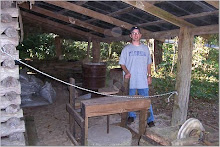In Sanford Levinson's book, Written in Stone: Public Monuments in Changing Societies, he starts off by looking at the way Eastern European nations are dealing with Soviet-era monuments. In the book he examines several controversial monuments throughout the world some of these monuments include Confederate Monuments in the southern United States. Levinson has studied monuments as a way to explore the differences in how diverse societies deal with public space. In my opinion the way Levinson's explains how some nations preserve monuments as historical markers while other nations destroy monuments as catharsis makes for not only educational information and enjoyable reading as well.
The first half had more of a focus on Eastern European Nations Monuments while the second half of the book focuses on the American South and the racial overtones that are brought about by monuments to the Confederacy. I can remember a movement in my home town of Valdosta Georgia from when I was in middle school to remove the statue of Confederate Soldier off the Court House grounds. I had not though about the issue with the monuments that is still there by the way until I started reading this book. Levinson has created fascinating book with topics that every person who reads it can find something to relate with. The book covered topics ranging from the flying of Confederate flags over Southern State Houses. Every history buff should remember that South Carolina only removed the Confederate from flying on their State Capital in the last decade. The portion of the book that was about the statue of Arthur Ashe being placed alongside those of white Confederate leaders in Virginia was especially interesting to me. For those of you that do not know Arthur Ashe was from Richmond Virginia and most likely the greatest male African American tennis player ever. Arthur Ashe died of AIDS in 1993 but is remember for not only what he did on the tennis court but for what he did in his life. Arthur Ashe created a foundation to help address issues of inadequate health care with an infuses in AIDS research. What made the placing of the Arthur Ashe statue on Monument Avenue was an extremely big move for the city of Richmond in my opinion. It was a move that was also much needed. Monument Avenue was a place that traditionally was reserved for statues of key Confederate figures. The decision to put the Arthur Ashe statue there led to some controversy within the city. Some people felt since the city was once the capital of the Confederate States during the Civil War that Monument Avenue should be left to honor the Confederacy.
The book seems to have two separate halves with different visions. Neither half seems to have enough information that ties the first half of the book to the second half of the book. It is in my opinion that without a clear link the two halves just simply co-exist. I found nothing to tie them together except for the extremely short conclusion about the role of a changing public consensus in determining which monuments stay up. If the reader can get through what I consider to be a lot of needless information, then "Written in Stone" is a wonderful book. The book covers who chooses our public monuments and the values they represent if the reader can not follow what the author is trying to say is this book the reader will most likely put it to the side and find some other book on monuments. Levinson uses the topic Public History by using monuments in public spaces and how monuments speak of their nation’s identity. I feel what hurts this book the most is lack of information in each story. The stories seem incomplete in my opinion leaving the reader wanting more. I feel the book lacked on information and the author could validate this book more by placing more information on monuments is the book. However, it does not take away that this book is a wonderful read that can be enjoyed by all who read it
The Final Frontier?
16 years ago
